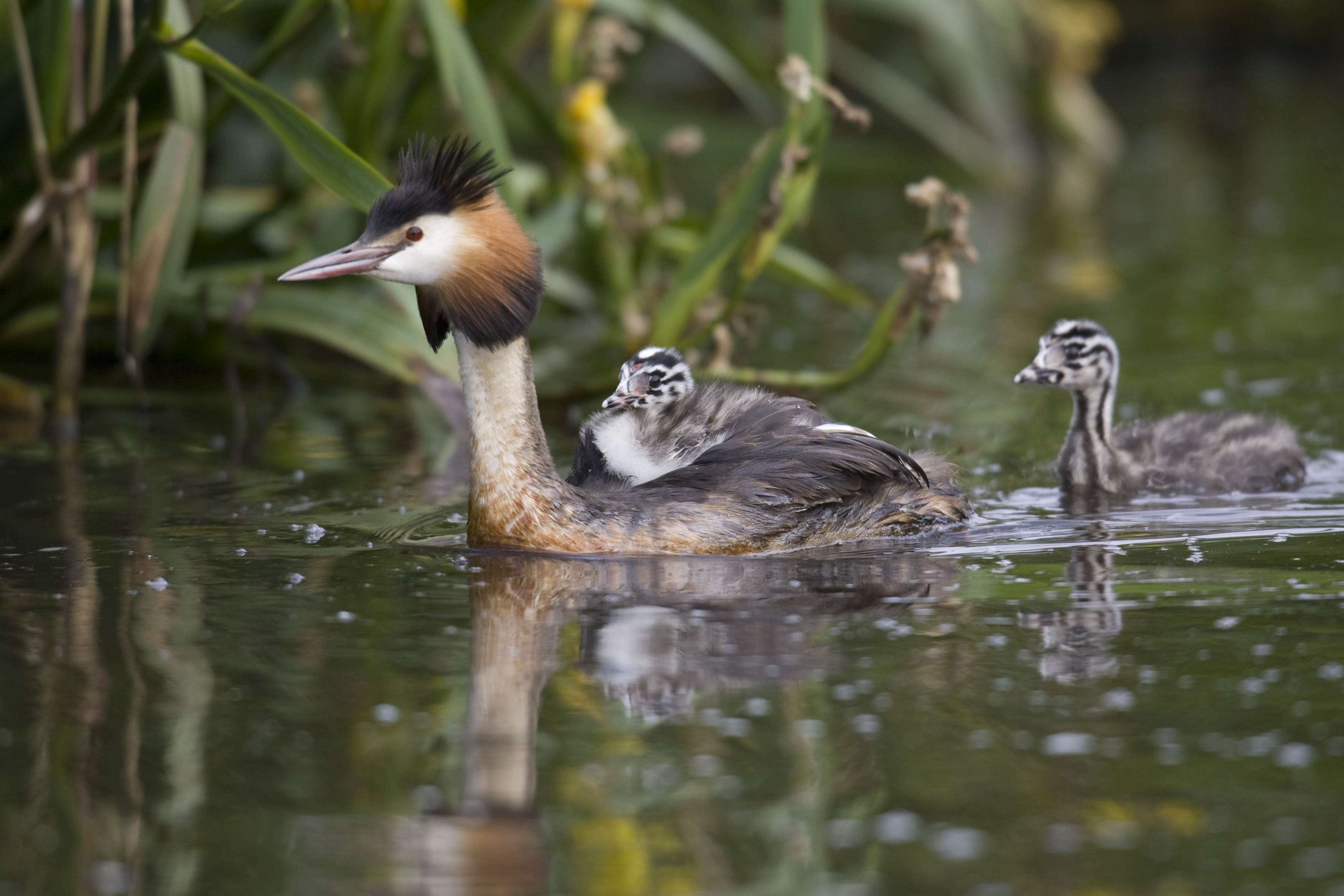Grebe, << greeb, >> is a kind of diving bird. Grebes dive underwater to catch such food as small fish, insects, snails, and shrimp. About 19 species of grebes live throughout the world. Six species live in North America. They are the western, the red-necked, the pied-billed, the horned, the eared, and the least.

Grebes have flattened bodies that are thickly covered with waterproof feathers. They do not have webbed feet like most other diving birds, but each long toe has several flaplike lobes. Grebes have small wings and a short tail. Their legs are far back on their bodies. For this reason, grebes have poor balance for standing or walking and are almost helpless on land. But they dive and swim with such ease that they have been called hell-divers and water witches. Grebes have great difficulty taking flight. But once they are airborne, they can fly long distances.
Loading the player...Horned grebe
Grebes make nests of decaying plants and water-soaked grasses. They build them in shallow marshes or ponds, usually in rushes. Some nests float like rafts on the water. Grebe eggs are white, pale green, or blue. They hatch in 20 to 30 days. The young can swim as soon as they hatch, though they often rest on their parents’ backs or under their wings. Scientists believe grebes are the only birds that dive while carrying their young.

Grebes were once killed for their feathers, which were used to make women’s hats. The birds are now protected by law.
